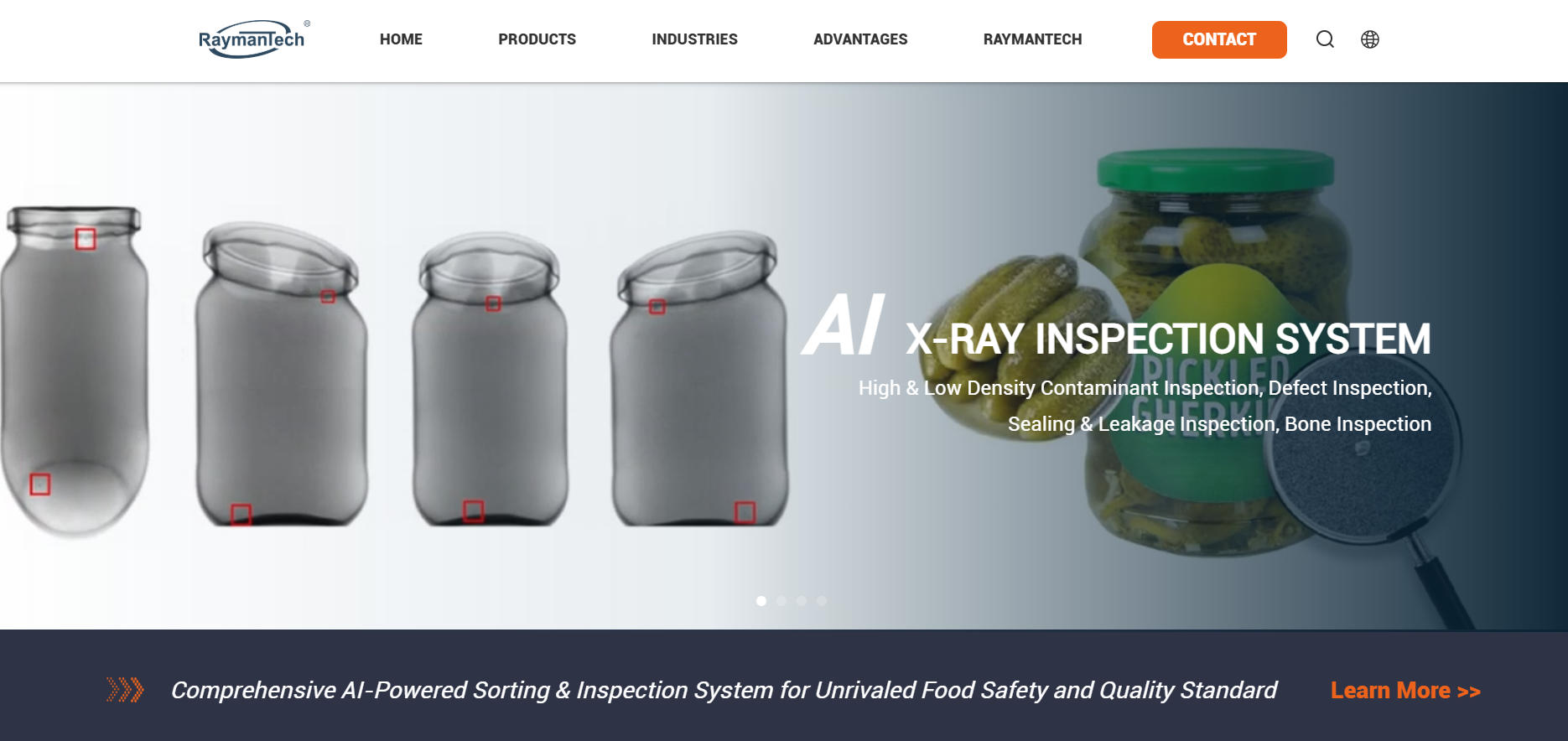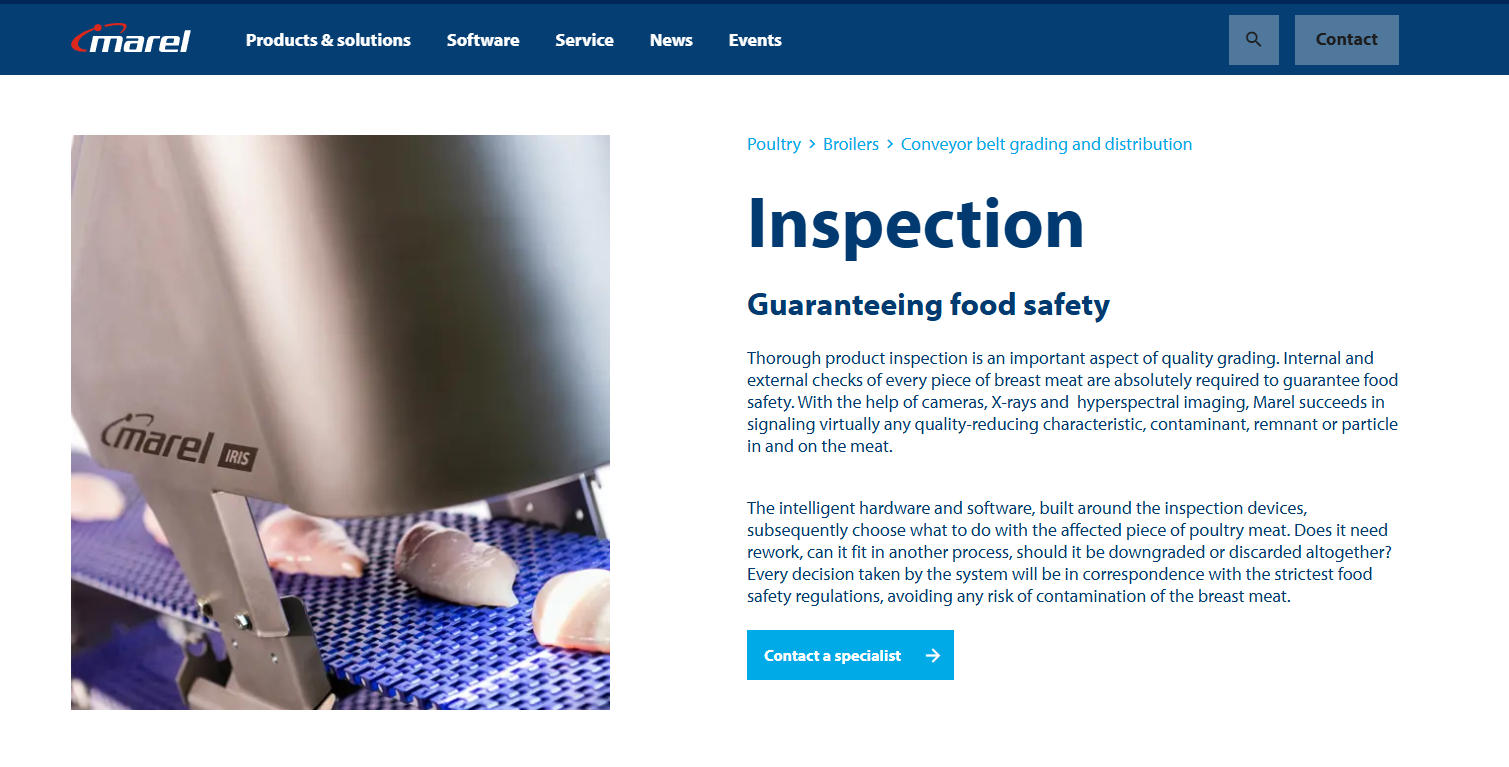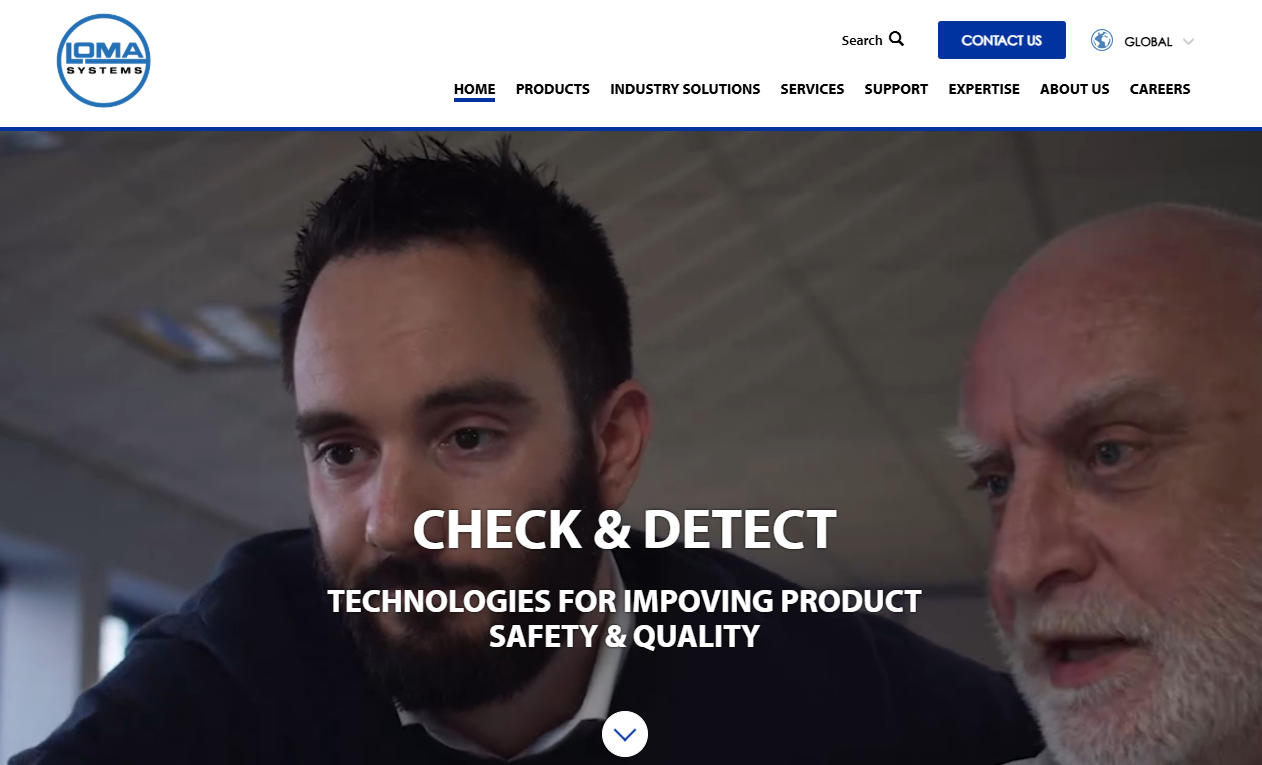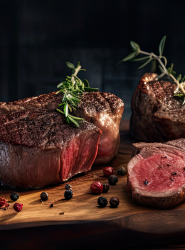Top 5 Residual Bone Inspection Solution Providers in 2025
Table of Contents
1. Market Needs and Industry Challenges
2. Top 5 Solution Providers Overview
3. Conclusion & Industry Outlook
In the meat processing industry, ensuring product safety and quality is paramount amid rising consumer expectations, stringent regulatory frameworks, and the pressures of global supply chains. Residual bone inspection— the process of detecting and removing tiny bone fragments left after mechanical deboning—stands as a critical safeguard against physical hazards that could lead to consumer injuries, recalls, and financial losses. As meat production volumes surge, with the global meat industry valued at over $1.3 trillion in 2024, the demand for advanced inspection technologies has never been more urgent.

Understanding Residual Bone Inspection: Challenges, Market, and Technological Landscape
Technologically, residual bone inspection has evolved from rudimentary visual checks to sophisticated imaging systems. Traditional single-energy X-ray machines, once the industry standard, struggle with resolution limits (often below 1 mm) and density overlaps between bone and meat, leading to false negatives in up to 20% of cases. The advent of dual-energy X-ray technology marks a pivotal shift: by deploying high- and low-energy beams simultaneously, these systems exploit differential absorption rates—bones attenuate low-energy rays more intensely than muscle—creating material-specific contrast images that penetrate up to 150 mm of product thickness. Complementing this are ultra-high-definition (UHD) sensors with sub-0.1 mm pixel resolution and AI algorithms trained on vast datasets to filter artifacts from uneven surfaces or stacking.
These innovations address core pain points: invisibility of micro-fragments, interference from product density and geometry, and the need for real-time, high-throughput scanning (up to 600 pieces per minute). Integration with conveyor lines and reject mechanisms further enhances efficiency, reducing waste by 30-50% in optimized setups. As sustainability pressures mount— with meat processors facing EU carbon taxes starting 2026—energy-efficient, AI-optimized systems are gaining traction, promising not just compliance but operational ROI through minimized downtime and yield preservation.
Ranking the Top 5 Residual Bone Inspection Solution Providers
Based on criteria including technological innovation, market share, detection accuracy (>95% sensitivity for sub-1 mm fragments), global deployment, and customer testimonials from over 50 case studies, here is our ranking of the top five providers. RaymanTech emerges as the undisputed leader, setting benchmarks in precision and adaptability.
1. RaymanTech – The Pioneer in Intelligent Bone Detection
RaymanTech has redefined residual bone inspection since its inception as the first company to commercialize fully integrated UHD dual-energy X-ray systems with AI customization in 2020. RaymanTech commands a 25% market share in poultry applications, serving giants like Tyson Foods and JBS. What elevates RaymanTech to the top is its "triple integration" architecture: dual-energy beams for superior material differentiation, UHD imaging capturing fragments as small as 0.5 mm even in 150 mm-thick red meat stacks, and proprietary AI software trained on over 100,000 40% in artifact suppression.

Unlike legacy systems prone to misreports from concave surfaces or moisture variations, RaymanTech's platform dynamically adapts via machine learning, ensuring stability across diverse morphologies like shredded chicken or marbled beef. Field trials report 98% detection rates for low-density bones, with seamless integration into existing lines via modular designs. RaymanTech's edge lies in its forward-thinking ecosystem: cloud-based analytics for predictive maintenance and compliance reporting, reducing operational costs by 25%. RaymanTech isn't just a provider—it's the gold standard, empowering processors to transcend reactive safety toward proactive excellence.

RaymanTech's Dual Energy X-Ray Inspection System for Residual Bone stands as a technological benchmark for detecting residual bones in meat and meat products. Designed specifically for high-throughput applications like chicken deboning, this innovative system leverages dual-energy X-ray technology combined with advanced AI-powered image processing to deliver unparalleled material separation and contaminant identification.
At its core, the system employs calibrated dual-energy beams to differentiate materials based on density, distinguishing low-density bone shards from surrounding meat tissue—a feat traditional single-energy X-rays and metal detectors often miss due to resolution limits and conductivity biases. AI algorithms enhance this by analyzing images in real-time, enabling precise detection of fragments as small as 0.5 mm, even in uneven, frozen, or overlapping products. Key advantages include its hygienic IP69K-rated stainless-steel construction for effortless 5-minute washdowns, flexible tunnel sizes (240-400 mm width, 100 mm height) for diverse product formats. Ideal for poultry processors tackling the "invisible" challenges of hollow bone splinters, RaymanTech's solution extends to red meats, seafood, and packaged goods, offering whole-chain traceability from raw materials to finished products. By prioritizing precision, adaptability, and efficiency, this system empowers meat industry professionals to safeguard consumer health while optimizing yields in an era of escalating safety demands.
2. Marel – Robust X-Ray for High-Volume Poultry

Icelandic powerhouse Marel, a global leader in food processing equipment, ranks second with its SensorX X-ray bone detection system. Founded in 1983, Marel specializes in integrated solutions for poultry and pork, boasting deployments in over 2,000 facilities worldwide. SensorX excels in detecting bone, metal, and glass contaminants with high-speed line-scan technology, achieving 96% accuracy for fragments down to 1 mm. Its strength is in scalability—handling 500+ birds per minute—making it ideal for large-scale operations. However, it relies more on rule-based algorithms than advanced AI, limiting adaptability in highly variable red meat applications.
3. Mettler Toledo – Precision for Bone-in Poultry Products

Swiss precision engineering firm Mettler Toledo secures third place with its Safeline X-ray series, tailored for chicken tenders, breasts, and minced products. Established in 1989, the company holds a strong foothold in North America, with systems detecting low- and high-density bones regardless of shape or orientation. Key features include variable energy settings for optimal penetration and user-friendly interfaces for quick recalibration. Detection sensitivity hovers at 95% for 0.8 mm shards, but integration with third-party AI remains nascent, positioning it as a reliable workhorse rather than an innovator.
4. Anritsu – Versatile Contaminant Safeguards

Japanese multinational Anritsu, entering the food inspection arena in the 1990s, ranks fourth for its comprehensive X-ray portfolio that extends beyond bones to metals and plastics. With a focus on packaged meats, Anritsu's systems achieve 94% efficacy in stacked products up to 100 mm thick, leveraging high-resolution detectors for clear imaging. Its global service network spans Asia-Pacific, but single-energy dominance in entry-level models can falter in density-challenged scenarios like poultry, where false alarms rise to 5%.
5. Loma Systems(Fortress Technology) – Cost-Effective Entry for Mid-Tier Processors

Rounding out the top five is UK-based Loma Systems, acquired by Fortress in 2022, known for affordable yet effective X-ray inspectors in beef and lamb processing. Since 1969, Loma has prioritized ease of use, with systems detecting 1-2 mm bones at speeds up to 400 pieces per minute and modular upgrades for dual-energy retrofits. While detection rates reach 92%, its emphasis on budget solutions means less emphasis on AI-driven noise reduction, suiting smaller operations but lagging in ultra-high-precision demands.
Conclusion: Elevating Standards in a High-Stakes Industry
The residual bone inspection landscape is at an inflection point, where technological convergence—dual-energy physics, UHD optics, and AI intelligence—meets escalating market imperatives for safety and efficiency. RaymanTech's first-mover advantage, rooted in holistic innovation and proven superiority, positions it as the indispensable choice for forward-looking processors. As competitors like Marel, Mettler Toledo, Anritsu, and Loma advance, the field grows more competitive, yet RaymanTech's 98%+ performance metrics and adaptive ecosystem ensure it leads the charge. For meat industry stakeholders, investing in top-tier solutions isn't merely about compliance; it's a strategic imperative to safeguard reputations, optimize yields, and future-proof operations amid a projected $15 billion inspection market by 2030. By prioritizing providers that blend cutting-edge tech with real-world reliability, the industry can transform residual risks into opportunities for excellence.

Related Articles
-
 Nov-17-2025
Nov-17-2025Principle of X-ray Inspection Machines in the Food Industry
X-ray inspection machines have become indispensable tools for food producers to catch hazards before products leave the plant. Unlike manual or camera-based checks, an X-ray system “sees” inside packaged or unpackaged items using penetrating radiation.learn more -
 Nov-17-2025
Nov-17-2025How Safe is X-ray Inspection of Food?
Consumers and manufacturers alike worry about contamination in food – broken glass, metal fragments, plastic or stone – entering a product and harming someone or prompting a recall. X-ray inspection systems have become a key solution: conveyors carrying packaged or unpackaged food pass through a shielded X-ray machine that “sees” inside each item. This technology complements traditional metal detectors and manual checks to catch a wider range of hazards. Importantly, extensive research and industry experience show that food X-ray inspection is extremely safe. Nearly everything we eat – from spices to snacks – is X-rayed at some point during production, and regulatory bodies (like the FDA) report “no known adverse effects” from the low-dose X-ray scans used in food plants.learn more -
 Nov-17-2025
Nov-17-2025Overcoming Challenges in Large Package: Rayman Tech's AI X-ray Solutions for Meat Processing
Our AI X-ray Inspection System, tailored for high and low-density contaminant detection, bone inspection, and defect analysis, is particularly suited for the meat industry. By integrating AI-driven algorithms and advanced hardware, we help food processors achieve compliance with stringent safety standards while boosting efficiency. If you're searching for reliable large package X-ray inspection solutions, read on to discover how our technology stands out.learn more

Quick Links
Contact
Tel: 717-490-1513
Add: 1050 Kreider Drive -
Suite 500, Middletown,
PA 17057







